
|
 |

|
 |
Divya Warier on cross-discipline mentorship - Shveta Arora e-mail: arorashveta1806@gmail.com January 19, 2025 During the COVID-19 outbreak and lockdowns in 2020, dancer Divya Warier organized Pratiroop, an online cross-mentorship programme that put dancers and mentors from different dance forms together. The result was short solos that were extremely concept-rich and innovative, with the dancers pushing the boundaries of their creativity and form under a guru who brought the influences and perspective of another discipline to bear on the usual production process. Pratiroop started as an online, video production platform for lack of choice, when lockdowns made it impossible to meet in person or perform on stage. However, the dancers used the opportunity to create well-produced videos and adapt to the medium. Some of dancers also exploited the video medium effectively, creating solos that were not one unbroken stage performance, but used angles, cuts and editing to create dance movies. Pratiroop has had four iterations so far, two during COVID in 2020 and 2021, and two after. Divya also organizes a cross-mentorship residency in Kerala. Divya is a Mohiniyattam dancer training under Dr. Neena Prasad in the Sougandhikam style, and has also learnt Bharatanatyam. She organizes Pratiroop and other dance initiatives under the umbrella of the Warrier Foundation, for which she also undertakes other charitable activities in education and the arts. I spoke to Divya about cross-mentorship and how the Pratiroop journey has birthed new, creative productions by established soloists. 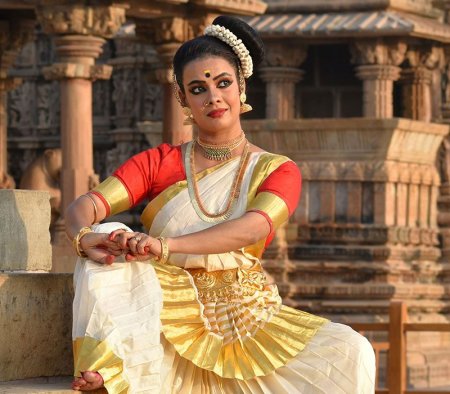 Divya Warier How did your work in philanthropy begin? The foundation started 25 years ago when I went to do a dance performance in an old-age home. I took my father there; I was very touched by the condition of the elderly. So, we made an old-age home in the building where we now have the Vedic school in Panvel in Mumbai. I was very happy to become an instrument in this cause. Since then, my dad has taken up the foundation as his own baby and today, we have different organizations working in different fields under the foundation. As far as art and culture are concerned, for the past 8-10 years, I have been actively trying to promote them through the foundation work. We had the Balmandir where again, art and culture were part of the curriculum. In our Vedic school also, children learn art, craft, music, dance, percussion and have annual events. Pratiroop was started during COVID. I thought that just like in other countries, there is the option to expand our horizons as artistes going to different teachers and mentors who are maybe not even directly related to our style. It fascinated me to see the dance companies and the many (more) people involved in the creation of a dance piece and an artiste. That's how the idea of cross-mentorship came in. All the mentors who came on board have been very kind and generous enough to accept this crazy idea because it's not something easily accepted in our Indian traditional art forms, due to the guru-shishya parampara. This is a completely separate stream. It doesn't go against what we have been following in our traditional form, because it is a mentorship - you have a glimpse of another artistic genius and their perspective, which doesn't tamper with your relationship with your own guru and form. We also have an extension of Pratiroop, the dance residency, which is a cross-mentorship residency again, and it is now in its fourth year (the Warrier Foundation's Residency was held in Kerala in November 2024 with gurus Aditi Mangaldas, Rama Vaidyanathan, Dr. Neena Prasad and Sharmila Biswas). There too, artistes have an interaction with a mentor from another dance form to see how and what can be adapted in their own dance style. It is pushing boundaries - as an artiste, I was very confused at that stage, so that entire ideation came about and we went ahead with it. Do you think that the idea of cross-mentorships helps, or does it add to the confusion - somebody from a different discipline mentoring you? In the last three seasons (of Pratiroop), we have seen that the mentees have been able to create pieces that are part of their traditional repertoire. They present these as part of their traditional repertoire and it's not work that is seen as experimental - most of it is grounded in their art form, yet the perspective for it is quite different. In fact, many dancers have benefitted from the cross-mentorship programme, including me, since I have also been a part of it. The confidence of our gurus has also been encouraging - they have showered us with positive feedback. So, for most of us, it has been a gratifying experience. It has taken the mentees choreographically to a better understanding of how to approach a subject - what you call out-of-the-box thinking - pushed each of us into something that doesn't usually exist. Like Keerthana Ravi (Bharatanatyam) was working under Prerana Shrimali didi (Kathak). In Bharatanatyam, we do not have abstract movement between our abhinaya pieces. She pushed herself to use that technique into her piece when she worked with Prerana didi, yet it was very traditional, and Keerthana performs the piece as a part of her margam. 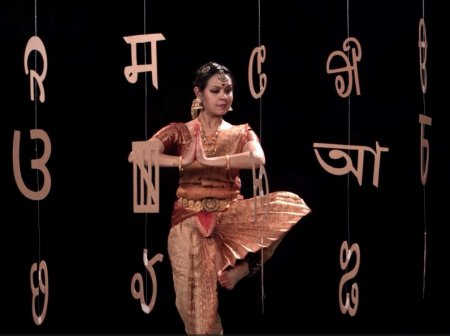 Arupa Lahiri With me (Mohiniyattam), the way we tell a story is what I adapted from Sharmila Biswas didi (Odissi). And with Arupa Lahiri (Bharatanatyam) also, one can see that she has used a lot of abstraction, similes and metaphors, while working under Anupama Kylash (Kuchipudi and Vilasini Natyam). That pushed her - sometimes it's not easy to show abstraction. Things like voiceover and English narrations to take your work ahead. Avijit Das was pushed out of his comfort zone into intense abhinaya by Dr. Neena Prasad (Mohiniyattam). These are the tools that we take from each of these mentors indirectly, and those tools will always stick with us. Like there are certain tools that are a part of my choreographic sense or artistic sense. These support us in ways that maybe we are not able to pinpoint exactly, but they stay with us. It's an intense and one-to-one journey, not like a one-hour session or a class among many other students. You talk throughout the process, there are many casual interactions that permeate into our artistic mind. In the last three seasons, I think we have been able to bring about clarity about being a mentor and having a clear definition of what a mentor does. Obviously it varies; there are some mentors who are more involved, some who are like directors, the mentorship aspects are different for each artiste, but it has never overshadowed the guru - they are separate. A mentor becomes another person you can pick up a phone and ask for guidance. Normally, we see these legendary artistes on stage or interact with them for a couple of minutes or a dinner, but never personally. This process, however, takes you into their world and they also see your world, which is great. In a series like Pratiroop, you see the real meaning of words like abstraction, out-of-the -box, creativity come alive. As artists, we come with a certain way of thinking - we stick to a path, the margam, our guru's choreographic works, and even in our own choreographic work, there is a path we stick to, a roadmap, which has walls, one-way streets... But when you meet another person (from a different discipline), there is a converging point where you suddenly see different things opening up. It is like a roundabout that leads to different directions, and you get a sneak peek into another direction, insights from which you apply into your own journey. All the mentees are already established dancers, they have done their choreographic work already, and then you come across another person to talk to, who has a different perspective, who is as invested in the process as you are. That was one question we had asked the mentors - how much time can you invest, and how much involvement will you have? Are you discussing the costume, make-up, the props? Are you giving the concept or coming to a concept together? Do you do research to supporting the artiste as well? Every mentor has had a different answer to these and each has provided the artiste with different things. There was no definition of what a mentor would bring to the plate - it was largely dependent on what the artiste wanted to ask and take away. And so a lot depended on the mentees also - develop a thought, break it into fragments, ask the right questions and get the right answers for each fragment. Having a thinking mentor and a thinking mentee helped in making it successful. The innovation was obvious. In Arupa's piece, there were the alphabets hanging from strings; in Avijit's piece, the costuming and the vessel of water that he looks into to see himself as Kamsa were amazing elements. 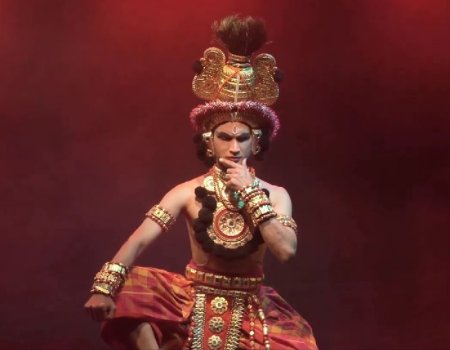 Avijit Das 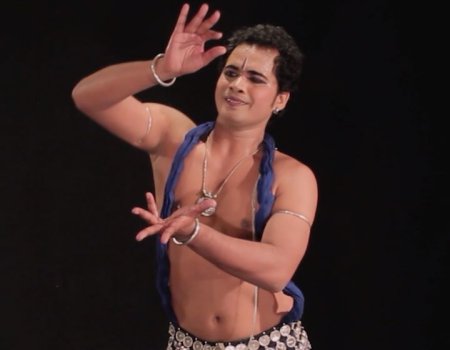 Rudraprasad Swain In Avijit's work, the influence of Neena Prasad has a definite stamp. In Mohiniyattam, a lot of emphasis is placed on netraabhinaya and if you see the camera work, you can see the intensity of abhinaya. So, there are these small things that inspire them and push them. It's their artistic brilliance, not just the mentor's. They have got the right questions and the right answers and right mentorship. This festival has been online so far - the videos are impactful and you can play around with a lot of things on this medium. Correct, though we do plan to do an offline version or a hybrid model sometime. Since the attention span of the audience watching an online performance is dwindling, we could bring in a format that has both. Like even in the online version, we have the process video before and an interaction and a review video later. It is not just about the performance - there is a thought before and a thought after which, for me, is very important. Then we will definitely have, even if it is offline, a review session and a session to understand the process with the mentor before the showcase. Many senior dancers have told me that they might not want to do this thing with a mentor since it goes against the guru-shishya parampara. But I would like to reiterate that it is an ancillary support system, not the main support system - an add-on for somebody already rooted in a tradition. It is not like a workshop where people learn your items and then perform the same. This is more like a tool kit that a growing artiste gets. And it is rooted in tradition. I strongly believe that it is not shaking up any system - in fact, it is strengthening it. Of course we have our own guru always, but when we go to another guru, we learn how to approach them - they are great dancers and artistes. We must learn to talk to them and learn not to take our own gurus lightly. And some of the artistes do not have gurus - like Avijit does not have a current guru he goes to everyday to learn from - so then you have another watchful eye to help you. 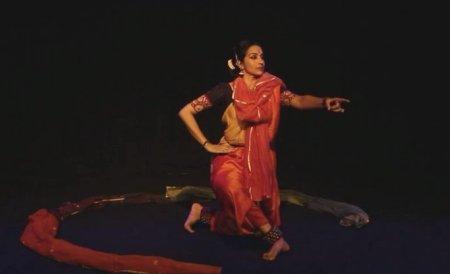 Divya Nayyar 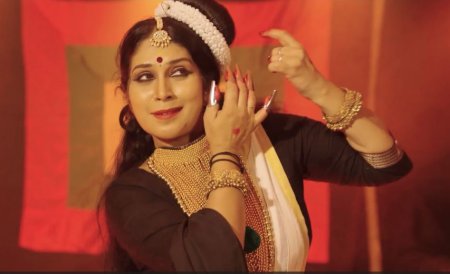 Mythili Anoop Have you been successful financially? India still does not have a ticket culture for a classical performance. The first two seasons we broke even and were able to donate to the foundation. But last year, we were not financially successful, maybe because there was a lull and people were not interested in watching an online video. It is an NGO and I am trying to make a base for art and culture so it's fine, but I am trying to make an audience base and I think Pratiroop should reach that also. I had started it with a selfish motive, and also to do something for the dance fraternity. I don't need to do it anymore but yes, I want to do it for the dancers who should be provided with not only vertical growth but also horizontal, with a support system. Most international artistes have that - a dramaturg, a co-choreographer, a whole team with whom they create great work. That was the idea - we edit, we also kind of give them the people to shoot with, so you also gain the experience of how to present something. We do pay them but basically, we are giving them something to create the work. Otherwise, artistes first create the work then look for funding. Here at least the seed is being given, plus access to an amazing mentor, for whose time we are paying, so it's like a fellowship under somebody. The base is being created and then they work from there. We give them a fertile land and they grow their own stuff. And they have been able to incorporate the ideas into pieces that they have adapted into their repertoire. I have watched and written about the Pratiroop series and thoroughly enjoyed seeing boundaries being pushed. Any such initiative should be encouraged in whichever format it comes. 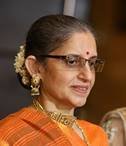 Shveta Arora is a dance-mad writer who chronicles classical dance events in Delhi (and also those online). In 2009, she started the blog Kala Upasana at delhiculturecomment.blogspot.com, where she began posting her own writing along with photographs clicked by Anoop Arora, her husband. She's been dancing all her life as a devotee, but resumed her formal training in Kathak in her 50s and has passed her fifth year Kathak exams. Post your comments Please provide your name and email id when you use the Anonymous / blog profiles to post a comment. All appropriate comments posted with name and email id in the blog will be featured in the site. |